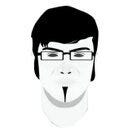Yakuza Unveiled. Interview With Anton Kusters — Photographer of Yakuza.
Anton shares about his time among Yakuza and what is it like to be a photographer in 21st century.
What images come to mind when you hear about the Yakuza? Most likely it’s an image of a brutal gang from a Hollywood action movie with lots of fighting on the streets of Tokyo. If you picture it like that, stop. It’s different. And thanks to Anton, you can now see the reality with your own eyes.
Belgian photographer, Anton Kusters, has spend years among Yakuza members, documenting life of the infamous group. The result? Now we can truly see and feel the life, philosophy and atmosphere of its members.
I had questions for Anton. I contacted him and he was kind enough to answer the questions we all want to ask. Here’s the interview:
Yakuza call themselves “ninkyō dantai” (任侠団体 or 仁侠団体) “chivalrous organizations”
Vashik Armenikus: What story does your Yakuza collection try to tell?
Anton Kusters : I think my story is a general one: about trying to understand a world that I cannot ever fully understand. About lifting a veil without judging, and documenting what I see in the process. To me the images capture an atmosphere, with details that unexpectedly go very deep.
“I learned that the world is not so much black versus white.”
VA: Did your time with Yakuza change your views on life?
AK: I think I learned that the world is not so much black versus white, but that there are many shades of grey, good people are capable of bad things, and bad people are capable of good things. I don’t think my world or life view radically changed, like always I am opposed to violence in any way… but I felt that as a person I must also be able to set this aside and look with an open mind and try to understand things I see. I think it influenced me in a way that nowadays I try much harder.
VA: Is there anything that photographs have revealed about Yakuza that the other genres failed to discover?
AK: I think the only difference is that I am telling a story with images, and we all have a different relationship towards reading words versus seeing images. Both are equally valid absolutely… but they are just different. The only difference is that many people have written about the Yakuza, but few people have photographed the Yakuza, and in my case it were documentary photographs.
VA: What did the tattoos of Yakuza members tell about themselves?
AK: This is quite impossible to say, as usually the scenes depicted in the tattoo of an individual are a private matter, known only to the tattoo artist and himself. Usually the tattoo artist uses classical Japanese mythology scenes to describe a personal event in the past that is of significant importance to the person, or a character trait, or a strong wish… but what the reason and the meaning is exactly, can not be fully seen by just looking at the tattoo by itself.
I think there is a crucial difference between “taking a picture” and “being a photographer”.
VA: How do you think the role of the photographer has changed in the age, when everyone can take a photo with an iPhone?
AK: I think the role of the photographer did not change at all… I think there is a crucial difference between “taking a picture” and “being a photographer”. There are many more people taking pictures, but the number of photographers seems roughly the same. Plus, there are soooooo many people that kan make or take better images than I can. Truly, I believe that my actual talent for photographing: light, composition, shutter speed, depth of field, is very much still in its infancy. I’m learning every day and it continues to be super exciting.
But I do think I understand how to witness and learn and tell a story with images and how to bring this story to the world in all its facets.
VA: What are the current and the future projects that you are working on ?
AK: Currently I completed a project on memory and remembering, a topic that lately fascinates me to no end… and I recently published a book about it titled “Mono No Aware”.
Now I continue down that path with a journey that I am undertaking as we speak, a journey trying to understand the Holocaust. The project is called “Heavens”, and I am traveling to every former known nazi concentration camp that ever existed, to photograph a polaroid of the blue sky above each location. There were 1075 camps, so when I finally finish, IF I ever succeed, the journey will have taken me five years.
“I am undertaking as we speak, a journey trying to understand the Holocaust.”
VA: Where can our readers find your albums?
AK: I centralise everything on my website www.antonkusters.com, you can find all books and posters and edition prints there, as well as a blog of thoughts, fears, hopes, and photography. You are welcome to stop by….
VA: I think many of us would be happy to stop by. Can you tell where can we visit your exhibitions?
AK: At this moment I have put the Yakuza exhibitions on hold, as I have been touring with them for 2 years straight in 2013 and 2014. It’s time to concentrate on my new projects… Mono No Aware will be exhibited starting in January in Antwerp in Belgium at Ingrid Deuss Gallery, and when new exhibits come up, they will always be announced on my website.
